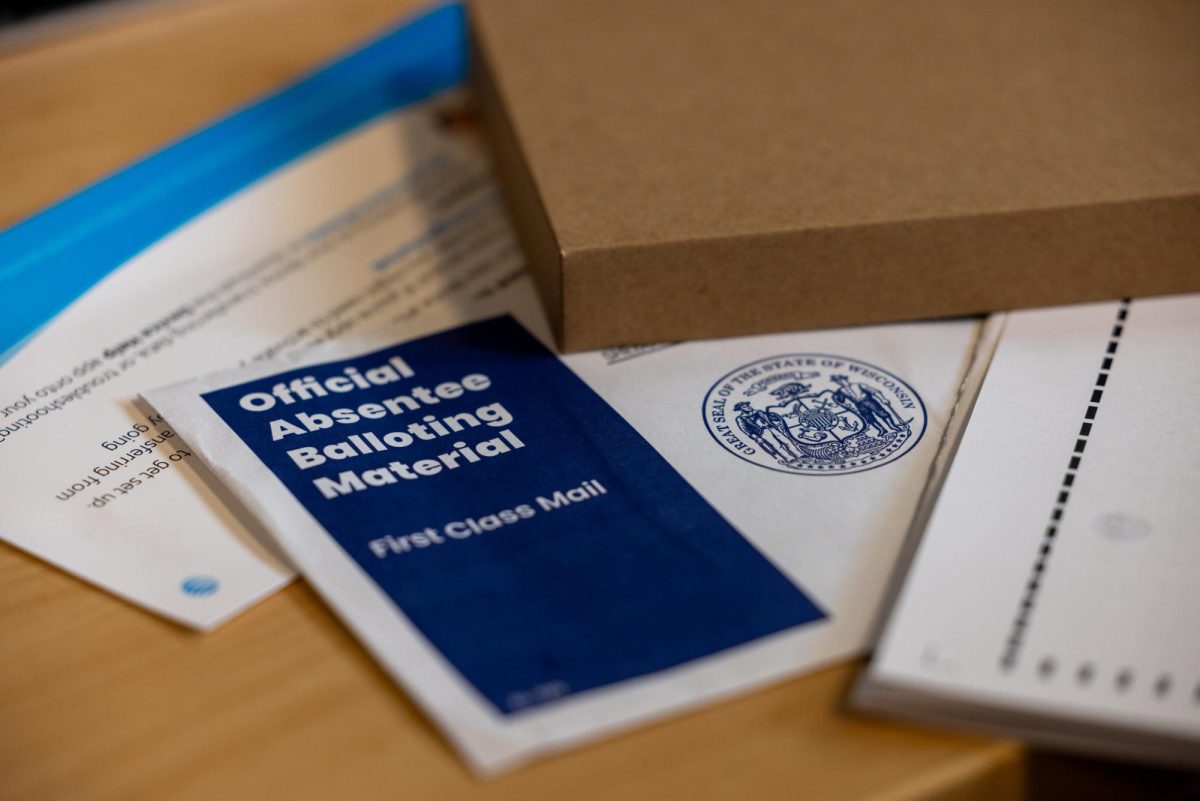As the academic year
comes to a close, many University of Wisconsin students are beginning to plan
their summers, life after graduation or simply deciding on a major.
A group of UW
administrators, however, has another task at hand: planning and potentially
eliminating a long-range diversity scheme.
Plan 2008, the current
plan created in 1998, is a UW initiative to increase the number of minority
students who are accepted, attend and graduate from the university. But some
administrators question whether the program has been effective.
According to 2007-08
Academic Planning and Analysis documents from the UW Office of the Provost, the
number of undergraduate minority students enrolled at UW has increased from
2,469 in 1998 to 3,678 in 2007.
The current number of
all ethnic minorities combined represents 12.6 percent of the approximately
29,000 undergraduates compared to 8.8 percent in 1998. The number of non-white
graduate students has increased from 768 in 1998 to 861 in 2007, increasing
from 9 to 9.7 percent of the grad school student body. The data excludes
foreign students.
Provost Pat Farrell
pointed to some positive progress but was hesitant to call the program a total
success. Retention rates are up, and the gap between minority and majority
students has decreased, which Farrell said is a “significant
milestone.”
“I think our
ability to draw a larger section of minorities has improved, and it’s much
better than what it was 10 years ago,” Farrell said. “The successes
that these students have are much more significant than 10 years ago. People
put a lot of effort into making that happen.”
Despite the increase
in admissions and retention rates in the past years, Farrell added evaluating
whether the climate at UW is more minority-friendly is a not a quantifiable
concept, though he sees signs of improvement.
“Things that I
would tend to look at are some of the things that we’ve talked about: who
comes, who stays and who doesn’t, and how successful they are when they are
here,” he said. “If the climate is positive to all our students, it’s
certainly going to be very helpful.”
If the climate is
unfavorable, Farrell added, “even if we’re able to recruit students,
they’re not going to stay, and if they are, they won’t be successful.”
Some UW professors,
however, question the numbers used to quantify possible successes of Plan 2008.
UW music professor
Richard Davis, who teaches a class on race, said Plan 2008 has not reached its
goals of increasing a positive climate at UW because the community itself is
not prepared for diversity.
“You have many
administrators, professors and students who represent bigotry, (and) some of
them will admit it to you — and they have admitted it to me,” Davis said.
“They’re oblivious, they don’t have any consciousness of people who are
not like them, and they don’t want to be around people who don’t look like
them, because it makes them feel uncomfortable.”
Lee Hansen, a UW
professor emeritus of economics, said he questions most of the ideas behind the
institution’s diversity efforts. For him, given the time and money spent on
diversity, UW has “not clearly accomplished a great deal.”
“In 1997-98, a
big deal was made about this diversity plan, but if you look at the record,
it’s not all that great,” Hansen said. “I’m not sure that there is a
better plan that could be put into effect. In my view, the best plan would be
to admit people on a race-blind basis and make student financial aid based on
financial need, without regard to race and ethnicity.”
Hansen, however, said
the problem is not necessarily something UW could fix, but is rather an
underlying issue in the state of Wisconsin.
“One of the
problems is that it’s a K-12 and family problem,” Hansen said. “There
aren’t enough competitive minorities coming out of Wisconsin high schools to
provide the proportional representation that lies behind the diversity plan,
and there is no quick remedy for that.”
According to Hansen,
many minority students would not be admitted at UW if they were to be admitted
competitively, and for him, being accepted is about “excellence and
competitiveness.”
“If the file
folders in applications were not flagged by race, my guess is that a lot of the
minorities would not be admitted,” Hansen said. “But because they’re
flagged, they get a second or third look that other students do not get.”
In its search for
diversity, UW has supported a number of programs that select and prepare pre-collegiate
students for university life. One such program, the Pre-College Enrichment
Opportunity Program for Learning Excellence, prepares middle and high school
students of color and low-income students.
According to a fall
2006 study, 99 percent of PEOPLE students graduate high school, 67 percent of
those enter UW, and 91 percent of those accepted stay and graduate. The program
had a projected budget of less than $200,000 in 1999, which increased to nearly
$5.2 million for 2006.
Damon Williams, who
was recently selected as the new vice provost for diversity and climate, said
while he has not officially had a chance to analyze the plan, he anticipates
evaluating it. Whether a similar one would be implemented is a major component
of the conversation he hopes to start.
“It is a document
that has been a real powerful guide to have the university moving forward with
issues of equity and diversity,” Williams said.
Williams said it would
be important for UW to scrutinize where diversity efforts are, and where they
should head in the next few years.
While Williams doesn’t
begin his new position until fall, Farrell said he is “not a big fan”
of creating another 10-year diversity plan.
“In some sense,
while [a plan] adds some time pressure which is not a bad thing, it also tends
to in some cases allows a little bit of relaxation because we’d have a lot of
time to achieve things,” Farrell said.
Farrell added he would
like to see the achievement gap between white students and minorities continue
to shrink.
“I think we’ve
made good progress; we still have a lot of things we can do, and most of us
here in Bascom are sort with the same mind –?we’re pleased with what
we’ve made, but we understand there is a lot to go,” he said.
Hansen, however, said
a new plan should just be scratched off UW’s list of things to do. He said
between the 1950s and late 1960s all applicants were required to attach a photo
to their application form. Today, being required to identify as a specific
ethnicity brings up a different kind of discrimination, he added.
“I would just put
a big ‘X’ on the whole box and refuse to write my ethnicity down,” Hansen
said.













